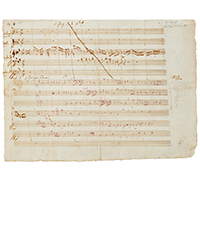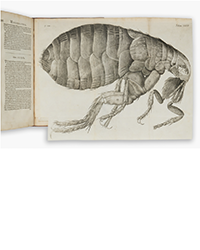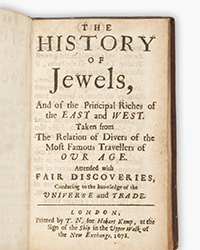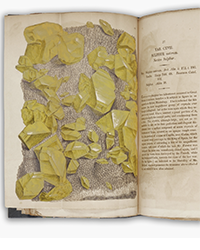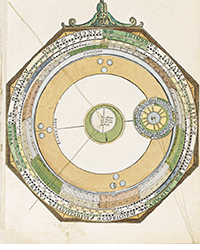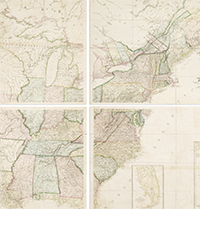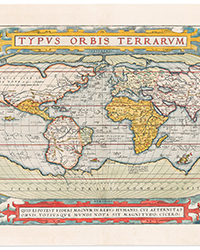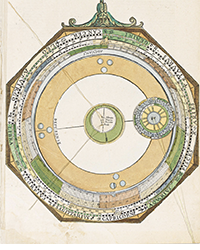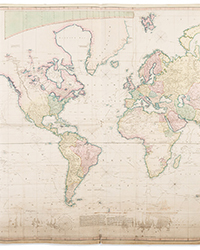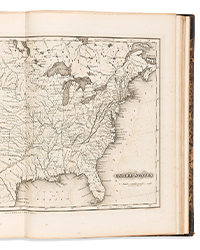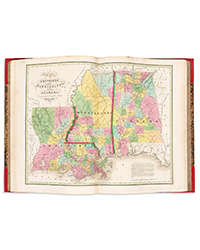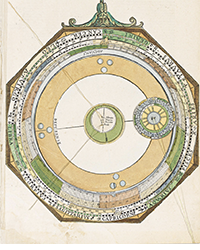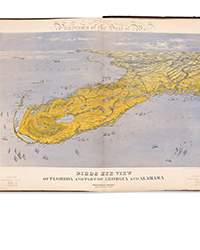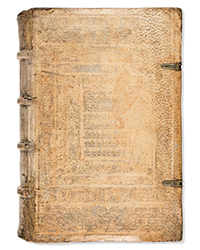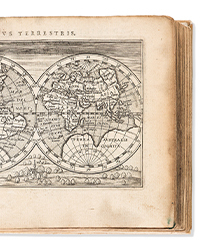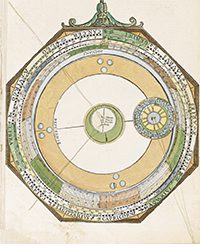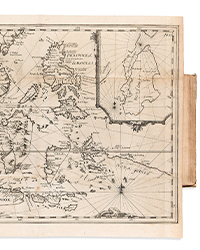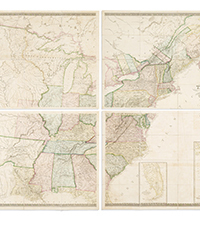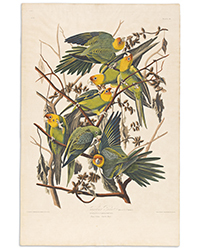Vidocq. A former convict, who escaped from 20 prisons, turned police informer, and then head of the Paris Surete. A very bold man. The father of modern criminology, who inspired writers such as Victor Hugo and Honoré de Balzac. In a word, a French myth. To find out about the man, let’s open an old peddling book.
There are many books about Eugène-François Vidocq (1775-1857), starting with his own memoirs. The “very sought-after” first edition in 4 volumes came out in 1828-291. They were written from Vidocq’s own notes and “many tales have been added to make it more spicy”, the bookseller L’Intersigne writes on his website. The last copy listed in the Rare Book Hub Transaction History (RBTH) went for $2,800 in 2008 (Bloomsbury Auctions). Fortunately, one Lerosey put out a more affordable abridged version of these memoirs in 1829: Histoire de Vidocq...—illustrated with Vidocq’s portrait! brags the title page. This is a typical early 19th century peddling (or popular) book with its small format, its modest binding and its compulsory frontispiece. In the second edition (1830), the printer even advertises another publication of his: a so-called Code of the Universal Generation of Love... followed by The Art to Cure Sexual Impotence! Sounds like the regular African healers’ ads you find in your letterbox every now and then. This book is the perfect introduction to Vidocq’s blurry story, as it was abridged from his memoirs by M. Froment, himself a former policeman, and the author of The Police Unveiled. It’s far more affordable too, as the last copy listed on the RBTH went for $312 in 2014 (Pierre Berge And Associes). There’s also another peddling book about Vidocq from the same period entitled Histoire de Vidocq, by G... (Louis Guyon), Paris—1829. It comes with the now classic folding frontispiece showing Vidocq arresting some stagecoach robbers in the woods of Sénart, France. A copy sold for $172 in 1998 (RBTH).
This is of course a very exciting read as Vidocq led a true romantic life. Enrolled in the army at a very young age, fighting duels at 17, falling in love of young and desirable women, he started to commit petty robberies that eventually led him to prison—the first part of his memoirs relates his many escapes, and portrays him as always avoiding to get involved in serious crimes (a brave man victim of circumstances, no doubt). He travelled with some Bohemians, rubbed elbows with the worst criminals in jail and learnt to know them. That’s how he eventually decided to turn informer, with such efficiency that he became a police officer—and then chief of the Paris Surete. “An adventurer and a detective, he contributed to the creation of the French secret police, and is regarded as the founder of modern criminology,” the Damien Volgaire auction house in Brussels writes about a copy of his memoirs sold for €1,200 in 2023. “Known as a very bold man, he was friends with people like Victor Hugo, Honoré de Balzac, Eugne Sue or Alexandre Dumas père. He inspired Balzac for one of his most lively characters in his works, the criminal Vautrin.” Victor Hugo also admitted that Jean Valjean in Les Misérables was partly inspired by Vidocq. What made Vidocq so famous is the way he’d catch criminals—he knew them well, he had learnt to speak their language, “l’argot”—the slang. It was easy for him to mingle with them in the Parisian “cabarets”. We find countless slang expressions in our book. Some words are still used today like “abouler” (hand your money), “fauché” (broke) or “être de mêche” (to be accomplice). There’s one which is today related to old books: to make a “choppin” (a good “bargain”). It means buying a book very cheap from a bookseller, who didn’t realize the true value of it.
Vidocq’s memoirs provide a fascinating insight into the society of his time: how were people living together, interacted, robbed or killed each other? What about the “cabarets” of la Courtille at night, or the prisoners’ lives? What was the role of the police, and how would they operate? In the times of D’Argenson, the secret police were already quite efficient—many regarded it as scandalous as d’Argenson would use (and pay, and sometimes protect) some “snitches” (they called them “mouches”—flies, in French) from the rabble. Vidocq went further, he mingled with the criminals he hunted, lived, eat with them, and even slept in the same bed until he could catch them red-handed. He also talked like them. As a matter of fact, his brigade was suspected of being so close to the criminals they were after that they might forget sometimes on which side of the law they stood—in his memoirs, Vidocq explains that his enemies tried to involve him into criminal activities through false evidences in order to make him fall. At the end of the day, caught between the rock and a hard place, he resigned in 1827, and started his own Detective Agency, “still using “avant-gardistes” methods such as ballistic analysis and the research of fingerprints long before they were officially adopted by the police.” (Wikipedia). His motto was Hate and War to all Rascals, and Everlasting Dedication to Trade. He eventually went bankrupt.
The devil, they say, hides in the details. In his book Vidocq (Paris, 1995), Eric Perrin says that Vidocq spent his last days in the arms of young ladies he’d lure with forged wills. A detail that says a lot on the man—the end justifies the means, as the police would say.
Thibault Ehrengardt
1The first 3 volumes came out with Vidocq’s handwritten signature as a way to prevent piracy. “I declare that the copies that do not bear my signature are unauthorized copies,” the text reads. Then comes the signature, then a next statement: “The copies required by the law for the legal deposit have been provided, therefore I shall sue as pirate any copy that won’t bear my signature.” Regarding this first edition, the bookseller L’Intersigne adds: “Two volumes of additions were printed two years later, but they are very rare and wanted in most sets.”


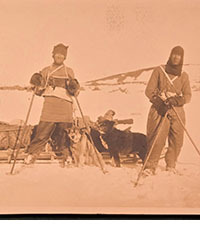
![<b>Scandinavian Art & Rare Books Auctions, Dec. 4:</b> ROALD AMUNDSEN: «Sydpolen» [ The South Pole] 1912. First edition in jackets and publisher's slip case. <b>Scandinavian Art & Rare Books Auctions, Dec. 4:</b> ROALD AMUNDSEN: «Sydpolen» [ The South Pole] 1912. First edition in jackets and publisher's slip case.](https://ae-files.s3.amazonaws.com/AdvertisementPhotos/0a99416d-9c0f-4fa3-afdd-7532ca8a2b2c.jpg)
![<b>Scandinavian Art & Rare Books Auctions, Dec. 4:</b> AMUNDSEN & NANSEN: «Fram over Polhavet» [Farthest North] 1897. AMUNDSEN's COPY! <b>Scandinavian Art & Rare Books Auctions, Dec. 4:</b> AMUNDSEN & NANSEN: «Fram over Polhavet» [Farthest North] 1897. AMUNDSEN's COPY!](https://ae-files.s3.amazonaws.com/AdvertisementPhotos/a077b4a5-0477-4c47-9847-0158cf045843.jpg)
![<b>Scandinavian Art & Rare Books Auctions, Dec. 4:</b> ERNEST SHACKLETON [ed.]: «Aurora Australis» 1908. First edition. The NORWAY COPY. <b>Scandinavian Art & Rare Books Auctions, Dec. 4:</b> ERNEST SHACKLETON [ed.]: «Aurora Australis» 1908. First edition. The NORWAY COPY.](https://ae-files.s3.amazonaws.com/AdvertisementPhotos/6363a735-e622-4d0a-852e-07cef58eccbe.jpg)
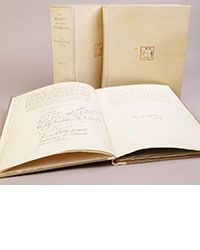
![<b>Scandinavian Art & Rare Books Auctions, Dec. 4:</b> SHACKLETON, BERNACCHI, CHERRY-GARRARD [ed.]: «The South Polar Times» I-III, 1902-1911. <b>Scandinavian Art & Rare Books Auctions, Dec. 4:</b> SHACKLETON, BERNACCHI, CHERRY-GARRARD [ed.]: «The South Polar Times» I-III, 1902-1911.](https://ae-files.s3.amazonaws.com/AdvertisementPhotos/3ee16d5b-a2ec-4c03-aeb6-aa3fcfec3a5e.jpg)
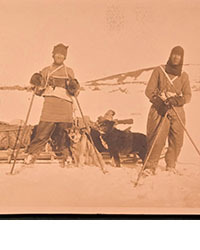
![<b>Scandinavian Art & Rare Books Auctions, Dec. 4:</b> [WILLEM BARENTSZ & HENRY HUDSON] - SAEGHMAN: «Verhael van de vier eerste schip-vaerden […]», 1663. <b>Scandinavian Art & Rare Books Auctions, Dec. 4:</b> [WILLEM BARENTSZ & HENRY HUDSON] - SAEGHMAN: «Verhael van de vier eerste schip-vaerden […]», 1663.](https://ae-files.s3.amazonaws.com/AdvertisementPhotos/d5f50485-7faa-423f-af0c-803b964dd2ba.jpg)
![<b>Scandinavian Art & Rare Books Auctions, Dec. 4:</b> TERRA NOVA EXPEDITION | LIEUTENANT HENRY ROBERTSON BOWERS: «At the South Pole.», Gelatin Silver Print. [10¾ x 15in. (27.2 x 38.1cm.) ]. <b>Scandinavian Art & Rare Books Auctions, Dec. 4:</b> TERRA NOVA EXPEDITION | LIEUTENANT HENRY ROBERTSON BOWERS: «At the South Pole.», Gelatin Silver Print. [10¾ x 15in. (27.2 x 38.1cm.) ].](https://ae-files.s3.amazonaws.com/AdvertisementPhotos/fb024365-7d7a-4510-9859-9d26b5c266cf.jpg)
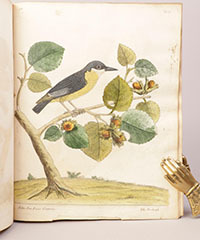
![<b>Scandinavian Art & Rare Books Auctions, Dec. 4:</b> PAUL GAIMARD: «Voyage de la Commision scientific du Nord, en Scandinavie, […]», c. 1842-46. ONLY HAND COLOURED COPY KNOWN WITH TWO ORIGINAL PAINTINGS BY BIARD. <b>Scandinavian Art & Rare Books Auctions, Dec. 4:</b> PAUL GAIMARD: «Voyage de la Commision scientific du Nord, en Scandinavie, […]», c. 1842-46. ONLY HAND COLOURED COPY KNOWN WITH TWO ORIGINAL PAINTINGS BY BIARD.](https://ae-files.s3.amazonaws.com/AdvertisementPhotos/a7c0eda0-9d8b-43ac-a504-58923308d5a4.jpg)
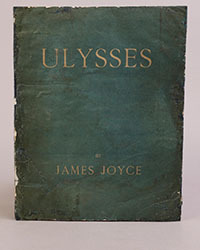
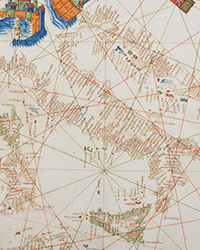
![<b>Sotheby’s, Dec. 11:</b> Darwin and Wallace. On the Tendency of Species to form Varieties..., [in:] <i>Journal of the Proceedings of the Linnean Society,</i> Vol. III, No. 9., 1858, Darwin announces the theory of natural selection. £100,000 to £150,000. <b>Sotheby’s, Dec. 11:</b> Darwin and Wallace. On the Tendency of Species to form Varieties..., [in:] <i>Journal of the Proceedings of the Linnean Society,</i> Vol. III, No. 9., 1858, Darwin announces the theory of natural selection. £100,000 to £150,000.](https://ae-files.s3.amazonaws.com/AdvertisementPhotos/00d5fd41-2542-4a80-b119-4886d4b9925f.png)

